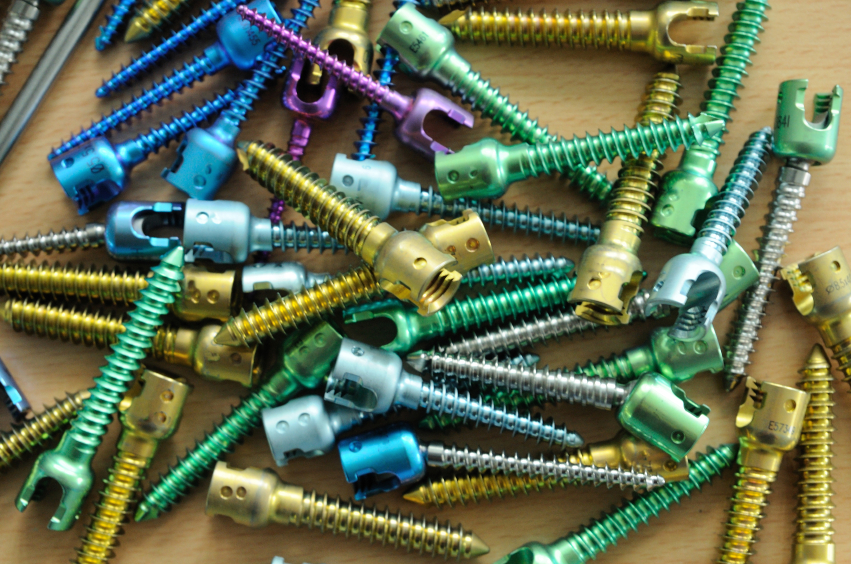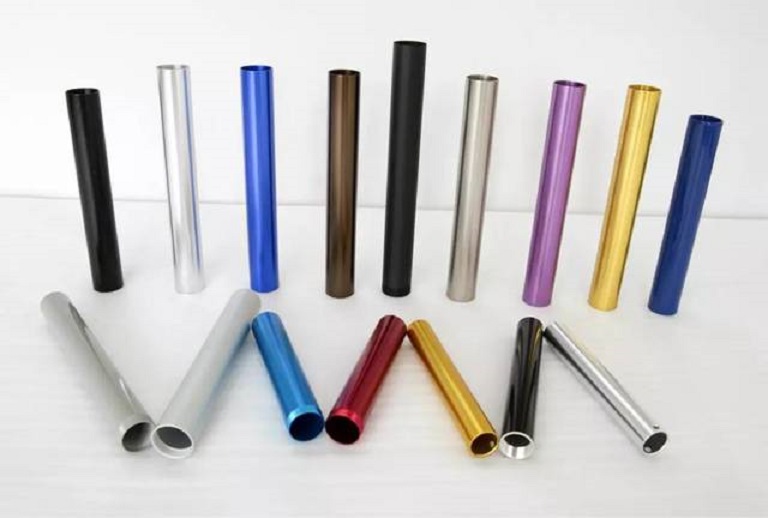Anodizing Process of Titanium & Its Alloys

Anodizing Process of Titanium & Its Alloys
The anodic oxidation process is a traditional technique of forming an oxide film by electrolytic oxidation on the surface of the metal and its alloys. The oxide film made with this technology has a uniform color, corrosion resistance, strong bonding force, and good biocompatibility, and has been widely used in modern biomedicine and aerospace fields. In this article, let's take a deeper look at the anodizing process of titanium and titanium alloys.

Anodizing Process of Titanium & Its Alloys
The anodizing process of titanium uses titanium as the anode and other metals such as stainless steel as the cathode. With the help of a certain electrolyte, the surface of the titanium alloy is oxidized to form an oxide film through an electrochemical reaction.
This layer of oxide film has a very obvious effect on the reflection and refraction of light, and the oxide film of different thicknesses will show different colors and at the same time have protective properties. Therefore, it is an ideal decorative layer and wear-resistant layer, which is widely used in construction, aviation, medicine, and other fields.
Anodizing and Coloring Method of Titanium and Its Alloys
The anodic oxidation and coloring process of titanium and its alloys is: degreasing (strong alkali degreasing agent) → water washing → initial pickling (hydrofluoric acid aqueous solution) → water washing → secondary pickling (hydrofluoric acid + hydrogen peroxide aqueous solution) → water washing → anodizing (phosphoric acid aqueous solution with constant voltage Electrolysis)→water washing→sealing→drying.
1. Degreasing
Degreasing is to remove the oil remaining on the surface of the titanium during rolling. Because the adhesion part of the oil is very poor in water permeability, uneven coloring easily occurs when pickling the titanium surface.
2. Initial Pickling
The initial pickling is to form a pear skin pattern on the surface of titanium and its alloys. The use of a 5% weight concentration of hydrofluoric acid for titanic acid washing can promote the formation of pear skin patterns.
3. Secondary Pickling
The secondary pickling is to remove the powdery dirt formed on the surface by the first pickling. In addition, in order to avoid uneven pickling, it is necessary to use hydrofluoric acid and an aqueous hydrogen peroxide solution to make the titanium ion become a titanium-containing complex to stabilize it after the surface dirt is dissolved by hydrofluoric acid.
4. Anodizing
Phosphoric acid with a concentration of 1% by weight in the electrolyte is used, the aluminum plate is used as the cathode, and the pre-treated titanium plate is used as the anode for constant voltage treatment. As the voltage rises, the oxide film on the titanium surface thickens, showing various color changes.
5. Sealing
In order to improve the corrosion resistance, pollution resistance, and wear resistance of the anodic oxide film, titanium and titanium alloys need to be sealed with hot water, steam, and solutions containing inorganic salts and organic substances after anodizing and coloring.
6. Drying
After sealing, wipe off the moisture on the workpiece with a clean cotton cloth and let it dry naturally.
Conclusion
In summary, it can be seen that the anodizing process of titanium and its alloys is relatively simple, the colors formed on the surface are rich, and the cost is relatively low. Therefore, it is easy to be popularized in industry and is a promising oxidation coloring technology.
Thank you for reading our article and we hope you've enjoyed it. If you want to know more about titanium and titanium alloys, we would like to advise you to visit Advanced Refractory Metals (ARM) for more information. Headquartered in Lake Forest, California, USA, Advanced Refractory Metals (ARM) is a leading manufacturer & supplier of refractory metals across the world. It provides customers with high-quality refractory metals and alloys such as titanium, titanium alloys, tungsten, molybdenum, tantalum, rhenium, and zirconium at a very competitive price.
{{item.content}}
LEVE A REPLY
{{item.children[0].content}}
{{item.content}}






